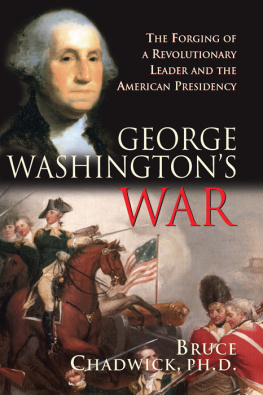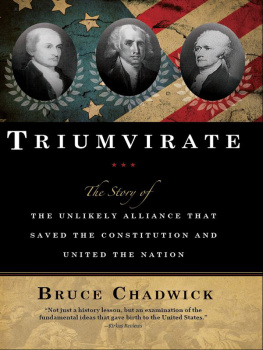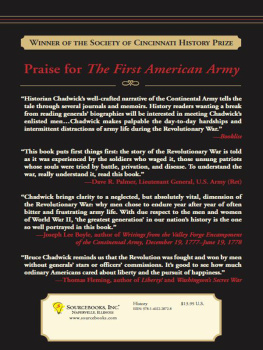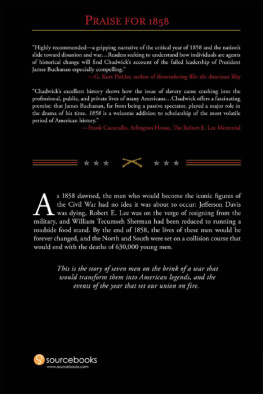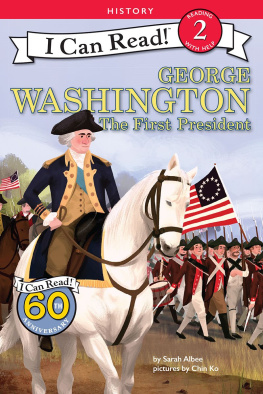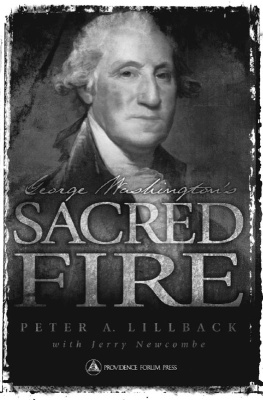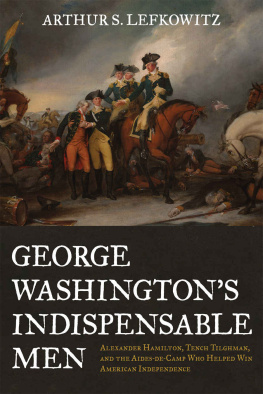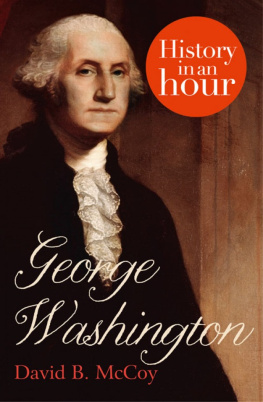
Copyright 2004 by Bruce Chadwick
Cover and internal design 2002 by Sourcebooks, Inc.
Top cover photo AP Wide World/Photo
Bottom cover photo Corbis
Sourcebooks and the colophon are registered trademarks of Sourcebooks, Inc.
All rights reserved. No part of this book may be reproduced in any form or by any electronic or mechanical means including information storage and retrieval systemsexcept in the case of brief quotations embodied in critical articles or reviewswithout permission in writing from its publisher, Sourcebooks, Inc.
Published by Sourcebooks, Inc.
P.O. Box 4410, Naperville, Illinois 605674410
(630) 9613900
FAX: (630) 9612168
www.sourcebooks.com
Library of Congress Cataloging-in-Publication Data
Chadwick, Bruce.
George Washington's war: the forging of a Revolutionary leader and the
American presidency / by Bruce Chadwick.
p. cm.
Includes bibliographical references and index.
ISBN 14022-0222-9 (alk. paper)
1. Washington, George, 17321799Military leadership. 2. Command of troopsHistory18th century. 3. United States. Continental ArmyHistory. 4. United StatesHistoryRevolution, 17751783Campaigns. 5. GeneralsUnited StatesBiography. 6. PresidentsUnited StatesBiography. I. Title.
E312.25.C48 2004
973.3'3' 092dc22
2004003566
For Margie and Rory
We are, during the winter, dreaming
of Independence and Peace.
George Washington, commander-in-chief of the
Continental Army in the American Revolution
The qualities we seek in a great man are vision,
integrity, courage, understanding, power of
articulation anda profundity of character.
Dwight D. Eisenhower, Supreme Allied Commander, World War II
Chapter One

CHRISTMAS, 1776
Victory or Death.
George Washington
D uring the early evening of December 19, 1776, a thick snow began to fall throughout central New Jersey and the greater Philadelphia area. It landed silently, coming down in straight lines, and within hours the countryside was covered with a blanket of white. The snow draped itself over the tops of large wooden barns and small homes. Slender columns of smoke from fireplaces inside cabins cut through the storm and drifted toward the sky. The snow made low rock outcroppings disappear as it piled high, filling up gullies and cascading in soft pillows over wooden wagons left outdoors. The snow rested on the branches of thousands of trees and lined the banks of creeks. It covered dirt roads and meadows near the Delaware River, which separated Trenton, New Jersey, from McKonkey's Ferry, in Pennsylvania, seven miles north.
The snow continued to fall through mid-morning of the following day. It was accompanied by light winds and a brisk twenty-four-degree temperature. Winter had finally hit Trenton and Philadelphia. The home of William Keith, near Newtown, Pennsylvania, now served as headquarters for George Washington, the commander-in-chief of the Continental Army. The Keith home, a two-story gray stone building, was covered with snow. Washington's officers, coming in and out of the Keith house, stamped their feet to loosen the powder from their boots and brushed the snow from their coats. On the first floor, two large fireplaces burned throughout the day and evening, providing the only heat for the officers and for George Washington, who was trapped by both the British Army and the vicissitudes of the icy weather.
The American Revolution had ignited in glory on a spring day, April 19, 1775, when colonists in Massachusetts battled British regulars at Lexington and Concord, forcing them to retreat back toward Boston after the firing of the famed shot heard 'round the world. The colonists had chased the British, shooting at them from behind trees and stone walls, from the windows of houses and from atop the roofs of barns. Later, residents had cheered when the British vacated the city at the end of the winter of 1776, forced out by a threatened artillery bombardment led by George Washington. The British army, under the command of General William Howe, had retreated from Boston to spend the remainder of the winter in Nova Scotia, Canada.
Washington's leadership had made him a hero. From the Carolinas to New Hampshire, thousands of men joined the Continental Army, determined to free the thirteen colonies from the yoke of what they considered unacceptable British oppression. The army, funded by the new Continental Congress, had the emotional support of many of the colonists, despite pockets of Loyalist, or pro-British, sympathizers. Soon it grew in strength from a collection of militia totaling ten thousand men to an army numbering more than twenty thousand soldiers and carrying with it more than two hundred cannon. Public support for the cause ran high in many of the states. The American revolutionary spirit reached its zenith on July 4, 1776, when members of the Continental Congress issued the Declaration of Independence. By that date, some colonists, particularly New Englanders, naively assumed that the hated redcoats would soon leave American soil and sail back to England.
The British had no intention of losing their colonies. A week after the Declaration of Independence had been signed, British general Henry Clinton left the coast of South Carolina with his troops in order to join forces at Staten Island with General Howe, who had brought nine thousand of his own men down from Nova Scotia. By the middle of August, Howe's brother, Admiral Richard Howe, had joined him. Together, they had assembled thirty-two thousand mena quarter of them Hessian auxiliariesalong with one hundred and thirty warships and transports, twenty frigates, and more than three hundred cannon, all gathered at considerable expense to defeat the American colonists. The numbers seemed overwhelming. By the end of the summer, there were, in fact, four thousand more British soldiers in New York than the entire population of Philadelphia, America's largest city.
Washington, who left Boston for New York earlier that year, spent the summer organizing his own defenses across Long Island, in forts along the Hudson River as well as earthworks on Brooklyn Heights. But despite his careful preparations, there was little he could do against the power of the British forces, especially since he seemed intent on battling them head-on, army against army, a misguided strategy that he would soon have to correct.
British troops at first overwhelmed the Americans at Brooklyn Heights, pushing them back toward the East River behind heavy cannon and musket fire. The vicious Hessians needlessly killed more than five hundred soldiers, bayoneting many of them in the back and shooting others as they tried to surrender. The British, under Howe, had the Americans boxed in on three sides, their backs to the river. Washington feared the annihilation of his entire army. He needed an escape route. It was then that he devised a method of retreatone that he would use continuously throughout the war.
Washington had access to hundreds of small flatboats that he had been collecting from the New York area. On the night of August 29, the general ordered soldiers, former fishermen, from Marblehead, Massachusetts, under the command of Colonel John Glover to quietly organize the boats into a flotilla and to wait for the beginning of a massive evening evacuation by the entire army. When darkness descended, the fishermen watched as regiments of men, moving quietly and in perfect order, climbed down from the heights above them and scrambled into the boats. Glover and his men then poled them across to Manhattan and out of danger under the cloak of a fortuitous fog. Finally, after the hours of watching the slow, soundless evacuation, George Washington, the last man on the east side of the river, climbed into the final boat and made his escape. When the British attacked in the morning, they found the campfires still burning, but the Heights empty.
Next page
